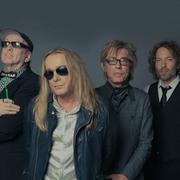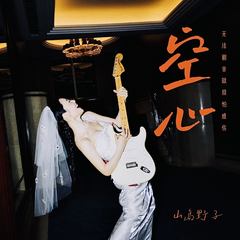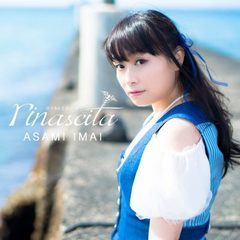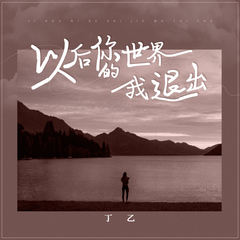Cheap Trick
Cheap Trick 由吉他手 Rick Nielsen 领导,风格包括 power-pop 和 arena rock ,对80年代和90年代的非主流及重金属乐队都有深远的影响。Cheap Trick起源于Rockford ,是一支在60年代晚期由 Rick Nielsen 和贝斯手 Tom Petersson 组成的名为 Fuse 的乐队,1969年发行了专辑《 Epic 》,并不成功。之后,乐队搬到了费城,并更名为 Sick Man of Europe ,1972年欧洲巡演也不成功。1973年回到 Rockford 后, Nielsen 和 Petersson 把乐队的名字改为 Cheap Trick ,并吸收鼓手 Bun E. Carlos 和歌手 Randy “Xeno”Hogan 。 Hogan 第二年被 Robin Zander 代替。1974年之1977年间,乐队每年几乎要演出200常ombining a love for British guitar pop songcraft with crunching power chords and a flair for the absurd, Cheap Trick provided the necessary links between 60s pop, heavy metal, and punk. Led by guitarist Rick Nielsen, the bands early albums were filled with highly melodic, well-written songs that drew equally from the crafted pop of the Beatles, the sonic assault of the Who, and the tongue-in-cheek musical eclecticism and humor of the Move. Their sound provided a blueprint for both power pop and arena rock; it also had a surprisingly long-lived effect on both alternative and heavy metal bands of the 80s and 90s, who also relied on the combination of loud riffs and catchy melodies. Cheap Tricks roots lie in Fuse, a late-60s Rockford, IL, band formed by Rick Nielsen and bassist Tom Petersson, who released an unsuccessful album on Epic in 1969. After the record failed to gain any attention, the band relocated to Philadelphia and changed their name to Sick Man of Europe. The group toured Europe unsuccessfully in 1972, returning to Illinois in 1973. Not long after their return to Rockford, Nielsen and Petersson changed their bands name to Cheap Trick, adding drummer Bun E. Carlos and vocalist Randy Xeno Hogan. Hogan was fired the following year and ex-folksinger Robin Zander joined the group. Between 1975 and the bands first album in 1977, Cheap Trick toured constantly, playing over 200 concerts a year, including opening slots for the Kinks, Kiss, Santana, AC/DC, and Queen. During this time, the band built up a solid catalog of original songs that would eventually comprise their first three albums; they also perfected their kinetic live show. Cheap Trick signed with Epic Records in 1976, releasing their self-titled debut in early 1977. The record sold well in America, yet it failed to chart. However, the group became a massive success in Japan, going gold upon release. Later that year, the band released their second album, In Color. It backed away from the harder-rocking Cheap Trick, featuring a slicker production and quieter arrangements that spotlighted the bands melodic skills. Due to their constant touring, the record made it into the U.S. charts, peaking at number 73; in Japan it became another gold-seller. The band realized that they were virtual superstars in Japan when they toured the country in early 1978. Their concerts were selling out within two hours and they packed Budokan Arena. Cheap Tricks concerts at Budokan Arena were recorded for release — the record appeared after their third album, 1978s Heaven Tonight. That third album captured both the loud, raucous energy of their debut and the hook-laden songcraft of In Color, leading to their first Top 100 single, Surrender, which peaked at number 62. However, the live performances on At Budokan (1979) captured the bands energetic, infectious live show, resulting in their commercial breakthrough in the U.S. The album stayed on the charts for over a year, peaking at number four and eventually selling over three million copies; a live version of I Want You to Want Me became their first Top Ten hit. Later that year, the group released their fourth studio album, Dream Police, which followed the same stylistic approach of Heaven Tonight. It also followed At Budokan into the Top Ten, selling over a million copies and launching the Top 40 hit singles Voices and Dream Police. In the summer of 1980, the group released an EP of tracks recorded between 1976-1979 called Found All the Parts. Following the recording of the George Martin-produced All Shook Up, Petersson left the group in the summer of 1980 to form a group with his wife, Dagmar; he was replaced by Jon Brant. Released toward the end of 1980, All Shook Up performed respectably, peaking at number 24 and going gold, yet the single Stop This Game failed to crack the Top 40. One on One, the groups seventh album and the first recorded with Brant, appeared in 1982. Although it peaked at number 39, the record was more successful than All Shook Up, eventually going platinum. Nevertheless, the group was entering a downhill commercial slide, despite the fact that its music was becoming increasingly polished. Next Position Please, released in 1983, failed to launch a hit single and spent only 11 weeks on the charts. Standing on the Edge (1985) and The Doctor (1986) suffered similar fates, as the group was slowly losing its creative spark. Petersson rejoined the band in 1988 and the group began working on a new record with the help of several professional songwriters. The resulting record, Lap of Luxury, was a platinum Top 20 hit, featuring the number one power ballad The Flame and a Top Ten version of Elvis Presleys Dont Be Cruel. Busted, released in 1990, wasnt as successful as Lap of Luxury, peaking at number 48 and effectively putting an end to the groups commercial comeback. Cheap Trick signed with Warner Brothers in 1994, releasing Woke Up With a Monster; the record spent two weeks on the chart, peaking at 123. That same year, Epic Records released a sequel to At Budokan, Budokan II. Compiled from the same shows as At Budokan, the record provided an effective reminder of why the group was so popular in the late 70s, not only for the public, but for the band as well. In 1995, Cheap Trick asked to leave Warner after the labels chief executives, Lenny Waronker and Mo Ostin, departed. Then the band decided to go back to the basics. Several alternative rockers who were influenced by Cheap Trick gave the band opportunities to restore its reputation. The Smashing Pumpkins had the band open their tour in 1995 and the group played several dates on the 1996 Lollapalooza Tour. That same year, the box set Sex, America, Cheap Trick appeared to good reviews and the band signed with the fledgling indie Red Ant-Alliance. Early in 1997, the group released a Steve Albini-produced single on Sub Pop, which was followed by Cheap Trick, their acclaimed debut for Red Ant-Alliance, in the spring. Unfortunately, Red Ant-Alliance filed for bankruptcy seven weeks after the albums release, sadly putting a sudden halt on the groups building comeback momentum. On April 30, 1998, the group began a four-night Chicago stay, devoting each show to reprising one of their first four albums in its entirety; the dates later yielded a 1999 live LP, Music for Hangovers, issued on their own Cheap Trick Unlimited label. A band-authorized hits collection followed in 2000. (See the bands official website for more information: www.cheaptrick.com.) By the dawn of the new millennium, Cheap Trick were still without a label, but had retained their loyal following as they kept touring the world (surprisingly, Cheap Trick turned down an offer to open up for their old pals Kiss on the masked quartets farewell tour of arenas and amphitheaters in 2000), as another live set saw the light of day in 2001. Entitled Silver, the double-disc set (and companion DVD) was a fine document of a star-studded and career-spanning 25th anniversary show from August 28, 1999, in their hometown of Rockford, IL. The band also recorded a studio album, released in 2003 as Special One. It was followed in 2006 by Rockford.


 The Flame - Cheap Trick
The Flame - Cheap Trick




























![[STATION] aespa《Dreams Come True》MV Teaser - aespa (에스파)](https://img2.kuwo.cn/wmvpic/324/79/54/2120387380.jpg?imageView2/1/w/195/h/130/format/jpg/q/60)





